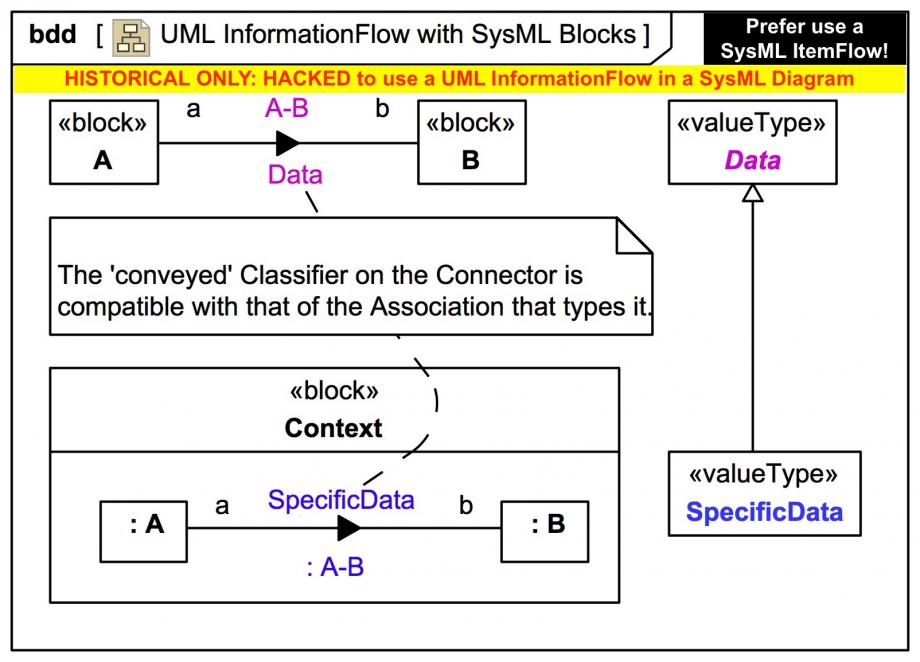Tags and keywords
Dr Darren says:
In the early days of SysMLv1, which builds on UML2, this slide was of interest. It is marked for replacement with one that simply shows the SysMLv1 way. But you can learn plenty from it, suggest you don't skip it.UML has a basic system for indicating flows of types of information at a high level of abstraction. This slide is here solely for historical purposes to show where the preferred SysML ItemFlow comes from.
In this example, an Association named
ASIDE: If you try to reproduce this diagram (best not to) you may encounter this strange bug: The diagram here is actually HACKED to show how it is supposed to work.
A-B between blocks A and B actually has a UML InformationFlow (not a SysML ItemFlow) with a 'conveyed' Classifier Data, which happens to be a SysML ValueType.
The model for the diagram here has been "fudged" to use InformationFlow only
In the structure compartment of block Context a specific connection has been made between the anonymous part properties :A and :B (typed by blocks A and B). The anonymous Connector :A-B is typed by Association A-B.
A compatible InformationFlow with conveyed classifier SpecificData has been applied to the Connector, where SpecificData is a specialisation of Data.
ASIDE: If you try to reproduce this diagram (best not to) you may encounter this strange bug: The diagram here is actually HACKED to show how it is supposed to work.


